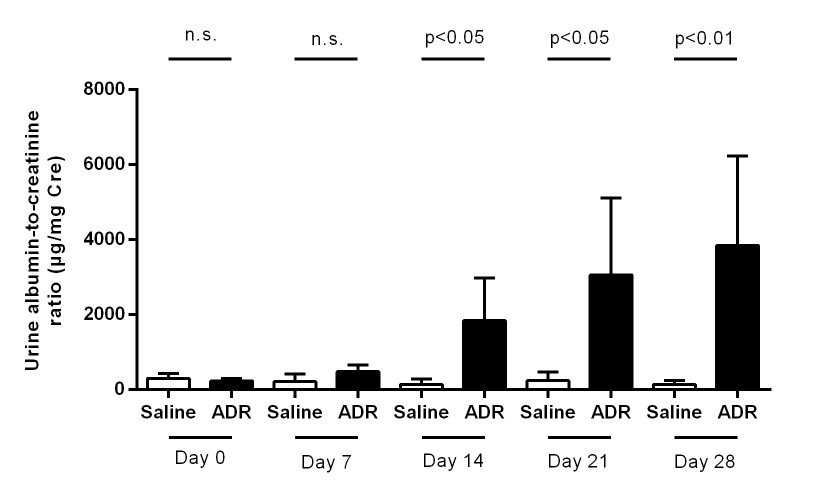Proteinuria in the Adriamycin model
When discussing our mouse models of chronic kidney disease (CKD), we are often asked about proteinuria as a urinary marker of kidney damage. As an important marker used in clinical trials, it’s also an important endpoint to look at in non-clinical research.
Proteinuria data in the Adriamycin model

Above is the time-course data of albuminuria in our Adriamycin mouse model.
On Day 28, when we typically assess histology, there is a significant increase in the urine albumin/creatinine ratio.
About proteinuria
CKD is an ongoing condition of reduced renal function and structural abnormalities, which is assessed by renal damage markers and histological analysis.
One of the most commonly used in clinical practice is proteinuria, which occurs when filtration function abnormalities due to glomerular damages. The Kidney Disease Improving Global Outcomes (KDIGO) guidelines recommend the use of the albumin/creatinine ratio in urine to measure proteinuria.
We believe that the ability to evaluate items used in real clinical trials is very important in selecting a mouse model of the disease.
As the current treatment of chronic kidney disease is aimed at preventing the progression of the disease, there is a need to develop a fundamental treatment for this disease.
We offer a drug efficacy evaluation service for the development of new drugs using mouse models of chronic kidney disease.
Including the Adriamycin model introduced above, we provide the following 4 models.
– Adriamycin model: glomerular assessment
– Adenine model: tubular and interstitial assessment
– UUO model: renal fibrosis
– Folic acid model: evaluation of chronic kidney disease from acute kidney injury
If you would like to know more about any of the above models, including their features and how they are used, please feel free to contact us.
